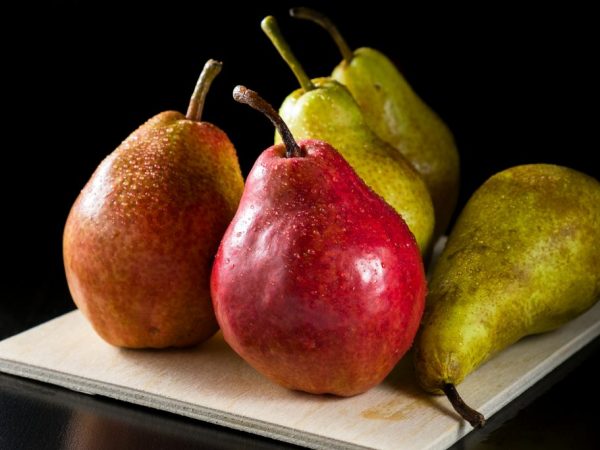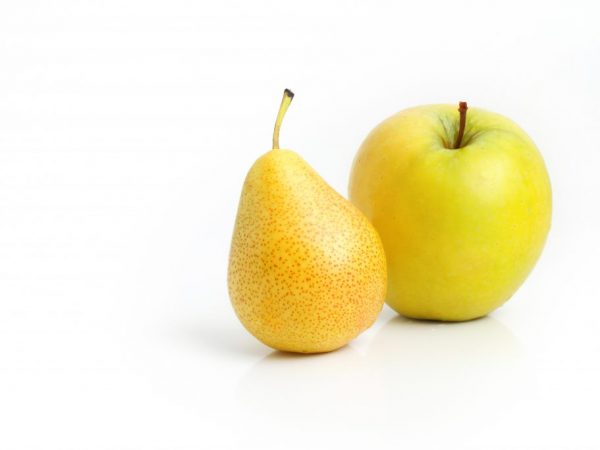Description of Pear Decor
Pear Decora has earned its popularity for its high winter hardiness and resistance to some diseases that pear culture is susceptible to. The variety is suitable for growing in the Urals and Siberia.

Description of Pear Decor
Variety characteristic
The description indicates that the Decora pear is a late summer variety. Already 2-3 years after planting a young seedling, you can get the first harvest. The tree bears fruit annually for 10-15 years. The culture is self-fertile. The culture begins to bear fruit from the end of August.
Description of the tree
The columnar variety of Decor is distinguished by its compactness. The height of the bush does not exceed 2-2.2 m. This is an excellent option for small areas. The pear has an interesting crown shape and a refined trunk similar to a column. It will become a worthy decorative element in your garden.
Description of the fetus
The pear of this variety is known for its large, juicy fruits - about 250 gr. They are of a solid yellow-green color. The fruit is not characterized by a blush. The flesh is white, very soft and sweet with a slight rose aroma.
Disembarkation
You can plant a crop in spring (April-early May) or autumn (September-mid-October). Choose annual seedlings because the likelihood that they will take root the first time is very high. When planting several young trees, keep the distance between them. It should not be less than 50 cm.
- 14 days before planting the seedlings, it is necessary to dig holes 60 cm in diameter and 80 cm in depth. Place 2-3 kg of organic fertilizer in them and mix them with soil.
- Before planting, moisten the rhizome of the young pear and the pit where the seedling will fall (4-5 liters of water in each).
- After that, it is necessary to add superphosphate and potassium sulfate to the soil.
- Before lowering the finished seedling into the soil, it is necessary to straighten the roots.
- The last step is to compact the soil around the tree and water it abundantly (1 bucket for each seedling).
Care

Don't let the pear dry
The variety is not picky enough and requires minimal attention. The first few weeks you need to ensure that the seedlings take root.
Create favorable conditions for the plant. A young tree needs abundant watering. It is necessary to moisten it every other day (1 bucket for each seedling). Mulch the soil after each watering. Here you need to be extremely careful: the roots of this type of culture are located close to the soil surface.
In the first year, it is better to pinch the seedlings. For the next season, you can leave 5-6 fruits on each tree. From year to year, with proper care and sufficient moisture, the variety will yield more yields.
In the event that the fruits of the Décor pear began to decrease in size, it is recommended to reduce the yield for the next season. This can be done by partially removing the ovaries.
Diseases and pests
The crop can be susceptible to certain types of pests and suffer from fungal infections inherent in this crop.
- In the buds of inflorescences, an insect such as gall midge can lay its eggs. After hatching, the larvae enter the receptacle.The flowering increases unnaturally quickly. Small parasites eat the inflorescences from the inside. This leads to cracking, wrinkling of the fruit, which, not yet ripe, falls off. In the fight against the pest, Metaphos and Chlorophos are effective (both agents must be diluted according to the instructions).
- Green aphids, which suck the juice from the shoots and leaves of the pear, are also dangerous for the Decor, which leads to the death of the culture. To prevent the appearance of a pest and its destruction, use a solution of liquid soap (5 tsp for 5 liters of water). You can purchase lacewing or ladybugs, which are considered natural aphid predators.
- White scab, which appears as yellow spots on the leaves of the tree, can spoil the crop. To combat it, it is recommended to use Bordeaux mixture or colloidal 1% sulfur (5 mg per bucket of water).
Conclusion
The presentable look of the decor pear tree makes it an adornment for any garden. Culture annually gives its juicy fruits, rich in vitamins and minerals that are so necessary for our body.


